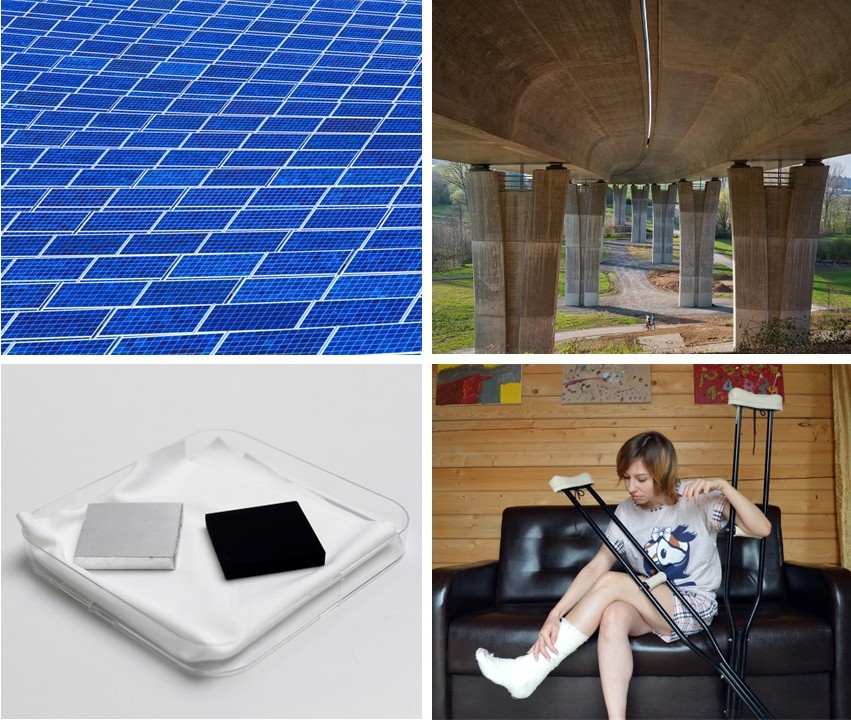The University of Luxembourg’s First Satellite Takes Flight
16 January 2025

The University of Luxembourg’s SnT launched its first miniature satellite, Poquito, into orbit on Tuesday, January 14, 2025.
This is a slightly adapted version of an article originally published in French on science.lu
POQUITO (PocketQube for In-Orbit Technology Operations – also meaning “a little” in Spanish) is a highly miniaturised satellite, measuring just 5x5x5 cm, making it one of the smallest satellites in the world.
This marks the University of Luxembourg‘s first entirely self-owned satellite, developed in just one year by SnT’s Space Systems Research Group (Interdisciplinary Centre for Security, Reliability, and Trust).
The nanosatellite was launched aboard a SpaceX Falcon 9 rocket as part of a technology validation mission. Poquito comprises two independent communication satellites connected via a wireless optical link. The mission aims to confirm if the two systems can effectively communicate in this way.
This innovative technology has potential applications in inter-satellite and intra-satellite communications (within a single satellite’s subsystems). It is also a significant step toward miniaturising space technologies, as these small satellites are cheaper to produce and launch than larger ones. Their applications range from radiation measurements to in-orbit technology testing and radio relay systems.
“This is a landmark achievement for the University of Luxembourg. With this launch, we are building up strategic capabilities for Luxembourg and laying the groundwork for future space missions.”
Jens Kreisel, Rector of the University of Luxembourg
Insights from the Research Team
science.lu spoke with Andreas Hein and Vittorio Franzese, two members of the research group, for a closer look at the Poquito project.


Poquito: Satellite Fact Sheet
- Type: PocketQube
- Size: 5x5x5 cm – about the size of a Rubik’s Cube or an orange!
- Weight: 185 g – the weight of a young rabbit
- Launch Date: January 14, 2025
- Orbit: Sun-synchronous, at an altitude of 525 km (for comparison, an airplane flies at around 10 km altitude)
- Mission Duration: 3 years
- Special Feature: Poquito consists of two miniature satellites, a PocketQube and a ChipSat, which will communicate with each other.
What happens during Poquito’s launch?
“Poquito is placed along with other small spacecraft inside a larger satellite acting as a taxi. This satellite will deploy into orbit and then move to another orbit, where it will release Poquito. This process takes around 7 to 14 days.”
Vittorio Franzese
Once deployed, Poquito will automatically activate and begin communicating with the SnT ground station in Luxembourg using Ultra High Frequency (UHF) signals.
What happens next?
“We chose a very low orbit (525 km), where atmospheric particles are still present. As the satellite orbits, it encounters resistance from these particles, gradually slowing it down until it spirals downward and burns up completely in the atmosphere. This ensures it poses no threat to people and doesn’t pollute the atmosphere,” explains Vittorio.

What makes Poquito unique?
It’s a combination of two miniaturised communication satellites: a PocketQube and a ChipSat. The ChipSat is a self-contained payload made of a printed circuit board measuring just 5x5x0.2 cm—the size of a credit card.
More information on PocketQube and CubeSat
A PocketQube is a type of ultra-compact satellite, even smaller than a CubeSat.
A CubeSat is a standardised small satellite often used for low-cost space missions. It consists of cubic units measuring 10x10x10 cm, which can be combined to form larger satellites.
Like the CubeSat, the PocketQube uses a modular approach but with smaller units.
PocketQubes are even cheaper to produce and launch than CubeSats, making them accessible to universities, startups, and individual researchers.
The mission tests the communication links between the ChipSat and the PocketQube, both designed by the University of Luxembourg.
“This is the first mission to connect two independent satellites: the PocketQube and the ChipSat, which is electrically independent. The ChipSat is a credit-card-sized satellite mounted on the PocketQube. No cables or traditional data transfer methods are used between these two satellites. Instead, all data is collected independently and transferred via miniaturised LEDs for optical communication,” explains Vittorio.
The ChipSat, while physically aboard Poquito, operates autonomously, with its own solar power generation, data management, sensors, and communication links.
“The key is establishing communication between the two satellites. If we succeed, we can envision expanding to larger regions of space with PocketQube constellations.”
Vittorio Franzese
What challenges does satellite miniaturisation pose?
Nanosatellites must perform all the functions of larger satellites—power generation, attitude control, communication, and structural integrity—in a much smaller space.
Despite their size, they can carry miniaturised components like sensors, antennas, and communication systems.
“Poquito is a technology validation mission. We aim to demonstrate optical communication links and advanced attitude control technologies, which are challenging due to the satellite’s small size. With fewer resources than a large satellite, we must miniaturise everything while maintaining essential functionalities.”
Satellite Attitude Control
Satellite attitude control refers to the set of systems used to orient and maintain a satellite’s position in space. Attitude refers to the orientation of an object relative to a given reference frame, often in relation to Earth or stars. Attitude control ensures that the satellite remains in the correct position to carry out its missions.
What challenges did the Poquito project face?
The project faced tight deadlines, with just one year instead of the usual ten to design a space mission.
“We booked a slot on the SpaceX launcher, and that was our target date,” recalls Vittorio. “It’s incredible to see that such a mission is possible within a year. It’s a paradigm shift.”
“The research group, established only three years ago, is young but ambitious. This is their second object sent to space. We faced countless challenges in a short time. Often, over coffee breaks, we’d question if we should keep going. Today, I can say we’ve come a long way.”
Andreas Hein

Democratising Space
Vittorio emphasises how this project contributes to the democratisation of space: “Today, anyone can access space with minimal funding. This wasn’t possible 10 or 20 years ago when only large agencies and governments could go to space. It’s the dawn of a new space era.”
Of course, this democratisation comes with the need for standards, regulations, and guidelines to ensure safety, sustainability, and environmental responsibility in space activities.
Space Research Made in Luxembourg
For nearly four decades, space has been part of Luxembourg’s industrial strategy. Today, Luxembourg is a leader in the satellite operator business and has high aspirations in the New Space Industry. This ambition is supported by public funding, an attractive legal framework and tax regime, research, international cooperation and education.
Luxembourg is a key player in the world of space exploration and commercial space ventures. The national space strategy emphasizes sustainable practices for Earth and Space, focusing on space debris mitigation, traffic management and the long-term sustainability of space activities. The country’s growing space ecosystem comprises over 80 space-related companies and research labs, employing more than 1,400 people. Key infrastructures include the LSA Data Center and the upcoming Space Campus, set to open in 2026.
An Anecdote
“During the qualification process, the satellite suddenly stopped working, and we couldn’t figure out why recalls Vittorio. “We did what you’d do with a laptop – completely disassembled and reassembled it. When we turned it back on, it worked, and we were cleared for the flight!”
We wish Poquito a successful journey!
Author: Diane Bertel
Editors: Michèle Weber (FNR) ; Hélène Jacuszin (Research Luxembourg)











